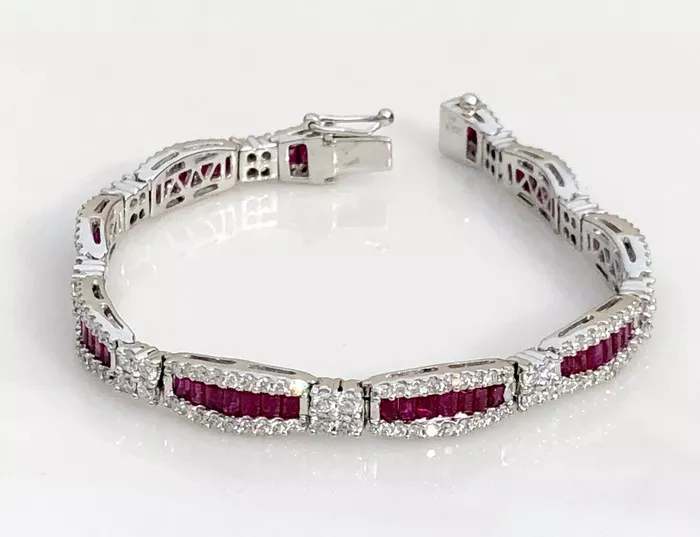Bracelets hold a unique significance in Chinese culture, serving as more than just fashion accessories. Embedded within the intricate designs and choice of materials lies a rich tapestry of tradition, belief, and symbolism. Understanding why Chinese individuals wear bracelets unveils a fascinating journey through history, culture, and personal expression.
Historical Roots: Tracing the Origins of Bracelet Wear
To comprehend the pervasive presence of bracelets in Chinese society, it’s imperative to delve into their historical origins. Bracelets have adorned the wrists of Chinese people for millennia, with evidence dating back to ancient dynasties such as the Shang and Zhou. Initially fashioned from materials like jade, gold, and silver, these early bracelets were symbols of wealth, status, and spiritual connection.
Throughout history, bracelets evolved beyond mere ornamentation to embody deeper cultural meanings. During the Han Dynasty, for instance, jade bracelets symbolized protection, good fortune, and spiritual harmony. As Chinese civilization progressed, so too did the significance of bracelets, reflecting shifts in societal values, religious beliefs, and fashion trends.
Symbolism and Significance: Unraveling the Meanings Behind Bracelets
The wearing of bracelets in Chinese culture transcends aesthetics, encapsulating a myriad of symbolic interpretations. One prevalent belief is that bracelets serve as talismans, warding off negative energy and promoting well-being. This ties into the broader concept of feng shui, where certain materials and designs are believed to harness positive qi, or life force energy.
Furthermore, bracelets often carry auspicious symbols imbued with cultural significance. From the iconic Chinese dragon representing power and prosperity to the serene lotus flower symbolizing purity and enlightenment, each motif adorning a bracelet holds its own unique message. By wearing these symbols close to the body, individuals seek to attract their associated virtues into their lives.
In addition to their symbolic value, bracelets also serve as expressions of identity and social connections. In Chinese culture, gift-giving plays a crucial role in fostering relationships and expressing goodwill. The exchange of bracelets, whether between friends, family members, or romantic partners, symbolizes affection, loyalty, and mutual respect. Furthermore, wearing matching bracelets serves as a visible reminder of the bonds shared between individuals, strengthening social ties and fostering a sense of belonging.
Cultural Customs: The Role of Bracelets in Rituals and Celebrations
Bracelets feature prominently in various Chinese customs and rituals, adding layers of meaning to significant life events. One such tradition is the gifting of red string bracelets during Chinese New Year, symbolizing blessings of happiness, prosperity, and longevity. These bracelets, often adorned with gold charms or auspicious symbols, are believed to bring good fortune to the wearer in the coming year.
Similarly, bracelets play a significant role in traditional Chinese weddings, where they symbolize the union of two individuals in matrimony. During the wedding ceremony, couples exchange bracelets as a symbol of their commitment and devotion to each other. These bracelets, typically made from materials like gold or jade, are treasured keepsakes that serve as enduring reminders of love and partnership.
Moreover, bracelets are often worn during important milestones such as birthdays, graduations, and career advancements. In these instances, bracelets serve as tokens of encouragement and support, marking significant achievements and inspiring the wearer to continue striving for success.
Fashion Trends and Contemporary Interpretations
While deeply rooted in tradition, the wearing of bracelets in Chinese culture has also evolved to reflect contemporary fashion trends and personal style preferences. Modern Chinese consumers have a plethora of options to choose from, ranging from traditional jade bangles to trendy charm bracelets adorned with playful motifs.
In recent years, there has been a resurgence of interest in traditional craftsmanship and materials, leading to a renewed appreciation for artisanal bracelets made from jade, gold, and other precious metals. This revival of traditional jewelry-making techniques not only preserves cultural heritage but also caters to consumers seeking authenticity and craftsmanship in an age of mass production.
Additionally, the rise of social media and influencer culture has contributed to the popularity of stacking bracelets, where multiple bracelets are worn together to create a personalized and eclectic look. This trend allows individuals to mix and match bracelets of different styles, materials, and colors, showcasing their unique personality and sense of fashion.
Conclusion
The wearing of bracelets in Chinese culture is a multifaceted practice that reflects a deep-seated reverence for tradition, symbolism, and personal expression. From their ancient origins rooted in history and mythology to their contemporary interpretations in fashion and social customs, bracelets serve as tangible manifestations of cultural identity and values.
Whether worn as symbols of protection and prosperity, tokens of affection and friendship, or expressions of style and individuality, bracelets continue to hold a special place in the hearts and minds of Chinese people around the world. As society evolves and trends come and go, the enduring appeal of bracelets serves as a testament to the timeless allure of Chinese culture and its rich tapestry of symbolism and tradition.

